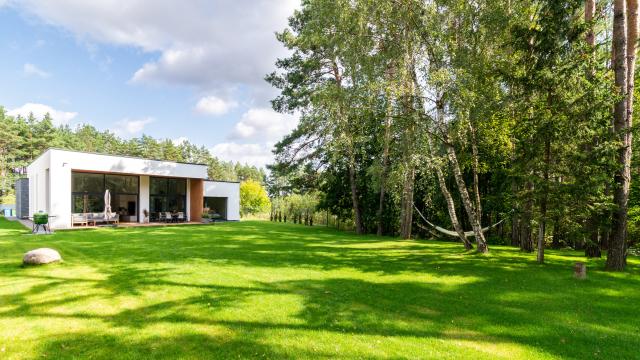It’s never been harder to keep a lawn alive and unless radical climate interventions happen like, tomorrow, this is the easiest it’ll be for the rest of your life. Not to be too dramatic, but: Have you ever considered giving up?
This is a serious question. By all accounts, lawns should not exist, and we’d be better off without them. Ecologically speaking, they’re a living nightmare; sociologically, they’re somehow worse. If you have a lawn, the best thing you can do is let it die. Here’s why — and what to do next.
Lawns are beautiful, and beauty is pain
The biggest problem with lawns is the way they look — or, more accurately, the way we think they should look. According to a 2005 paper on lawn aesthetics by ecologist Loren B. Byrne, “[T]he idealised lawn is evenly mown, contains one grass species without weeds or diseases, and is green all year round.”
This definition hammers home how hilariously unrealistic lawns are as a concept. Green, lush, weed-free grass needs enormous amounts of upkeep in the form of water, fertiliser, weed killer, pesticides, fossil fuels, electricity, and physical labour. The bigger the lawn, the more it needs. When you consider that “lawns” include golf courses, parks, athletic fields, campuses, and other big, green spaces, the scale quickly becomes inconceivable. Just how many resources do lawns use?
How to get rid of your lawn
The good news about lawns is that converting them into something better is both easy and fun. An obvious first step is to start planting anything besides grass: trees, shrubs, flowering plants, vegetables and fruits, or whatever else you like.
Keep in mind that you can keep some grass around if you like — introducing other types of plants will actually keep it healthier, with less effort on your part.
If any of these changes are not realistic for you, you still have some options. First, accept that brown grass is a fact of life, not an existential threat. Second, reduce your lawn’s environmental impact as much as possible: Water it less, let it grow longer to encourage stronger roots, and use clippings as mulch. If you can, use rakes and push mowers instead of power tools.
Finally, leverage your power as a homeowner (if you are one) to advocate for better regulations: Run for a seat on your local board, show up to town halls to yell at elected officials, or join a local anti-lawn advocacy group. In June 2021, Nevada banned certain types of “non-functional turf” to conserve water. It won’t go into effect until 2027 and (shocker) excludes golf courses and single-family residences, but hopefully, it’s a sign of better things to come.
This article has been updated since publication.

Leave a Reply
You must be logged in to post a comment.